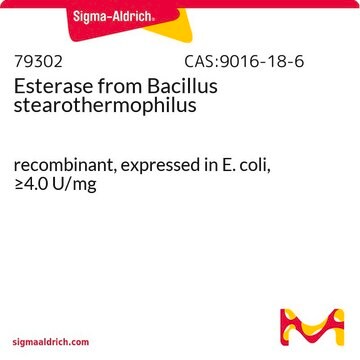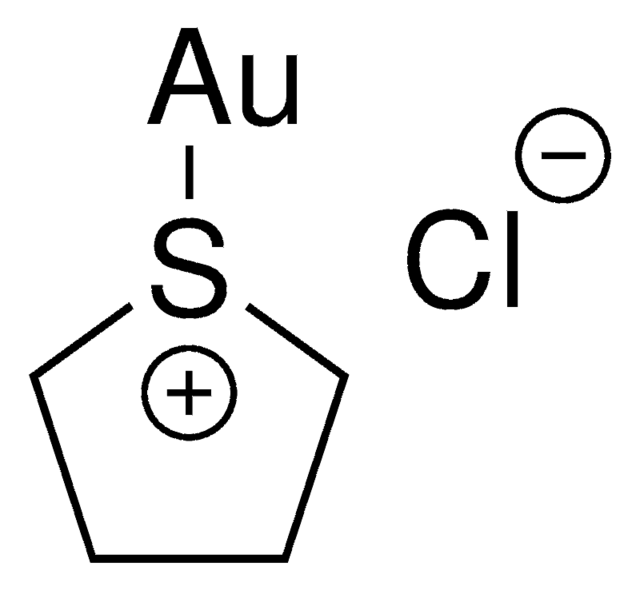A0606
Aurothioglucose hydrate
≥96% (titration)
Synonym(s):
Gold thioglucose, Solganal, Solganol
About This Item
Recommended Products
Assay
≥96% (titration)
form
powder
storage condition
desiccated
color
white to beige
solubility
H2O: 5 mg/mL, clear
storage temp.
2-8°C
SMILES string
O.OC[C@H]1O[C@H](S[Au])[C@H](O)[C@@H](O)[C@@H]1O
InChI
1S/C6H12O5S.Au.H2O/c7-1-2-3(8)4(9)5(10)6(12)11-2;;/h2-10,12H,1H2;;1H2/q;+1;/p-1/t2-,3-,4+,5-,6-;;/m1../s1
InChI key
SGVIEHTYEMEDRR-PKXGBZFFSA-M
Looking for similar products? Visit Product Comparison Guide
Application
Biochem/physiol Actions
Features and Benefits
Signal Word
Danger
Hazard Statements
Precautionary Statements
Hazard Classifications
Resp. Sens. 1 - Skin Sens. 1
Storage Class Code
11 - Combustible Solids
WGK
WGK 3
Flash Point(F)
Not applicable
Flash Point(C)
Not applicable
Personal Protective Equipment
Certificates of Analysis (COA)
Search for Certificates of Analysis (COA) by entering the products Lot/Batch Number. Lot and Batch Numbers can be found on a product’s label following the words ‘Lot’ or ‘Batch’.
Already Own This Product?
Find documentation for the products that you have recently purchased in the Document Library.
Customers Also Viewed
Articles
Protein kinase C (PKC) is an AGC kinase that phosphorylates serine and threonine residues in many target proteins.
Our team of scientists has experience in all areas of research including Life Science, Material Science, Chemical Synthesis, Chromatography, Analytical and many others.
Contact Technical Service













